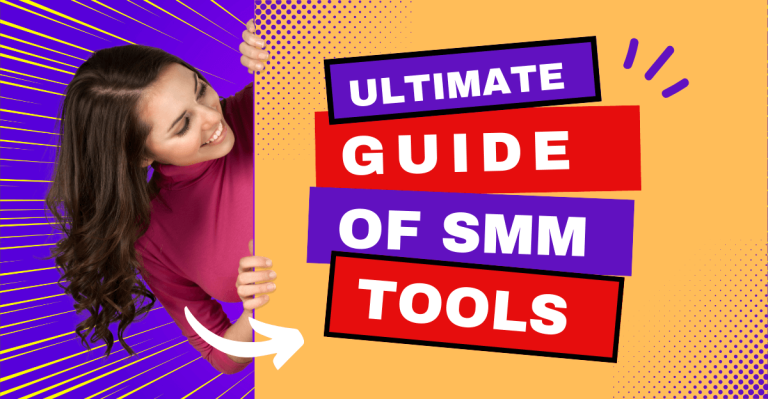The Psychology Behind Effective Email Subject Lines: a beginner's guide
Understanding the main factors that influence the open rate of email marketing messages
As email marketing professionals, we all know that subject lines are critical to the success of any email campaign. A well-designed subject line can grab your subscribers' attention, convince them to open your email and ultimately take the desired action (purchase, sign-up, click, etc.). But what makes a subject line effective? What psychological factors influence readers' reactions to email content, and how can we leverage these factors to create subject lines that are responsive to our audience?
In this beginner's guide, we'll explore the psychology behind effective email subject lines, covering the key factors that influence email open rates and interaction with your subscribers. From emotional triggers to powerful words and personalization, we'll discuss the actions involved in balancing different factors and explore the challenges associated with different approaches. We'll also emphasize the importance of considering the timing of your messages when making decisions about the psychology behind effective email subject lines.
The importance of subject lines in email marketing
As mentioned earlier, subject lines play a critical role in the success of your email campaign. They are the first thing your subscribers see in their inbox and can make the decision to open your email or not. Therefore, it is essential to create attention-grabbing subject lines that motivate readers to engage with your content.
Emotional stimuli in thematic lines
Emotional triggers are a powerful tool for creating effective email subject lines that grab your subscribers' attention and increase loyalty. In fact, studies have shown that topics that evoke emotions such as curiosity, urgency, excitement or fear can increase open rates and engagement.
Emotional triggers work by appealing to the basic needs, desires and fears of your subscribers. When your subject line taps into these emotions, it creates a sense of urgency and curiosity that encourages your subscribers to open your emails and take action.
Let's take a closer look at some of the emotional stimuli that can be used in subject lines:
Curiosity
Curiosity is one of the most effective emotional triggers for email subject lines. It responds to our natural desire to learn something new or discover something interesting. For example, a subject line like "You won't believe what we discovered" creates a sense of curiosity that compels the subscriber to open the email to find out what the discovery is.
Other examples of curiosity-based subject lines include:
- "The secret to the [desired result]"
- "Do you know the answer to that question?"
- "What [insert name] can teach you about [subject]"
Sense of urgency
A sense of urgency is another effective emotional trigger that can create a sense of FOMO (Fear Of Missing Out) in your subscribers. By creating a sense of urgency, you can encourage your subscribers to take action quickly. For example, a subject line such as "Last chance to discount 50%" creates a sense of urgency that encourages the subscriber to take advantage of the offer before it expires.
Other examples of emergency-based thematic lines include:
- "Hurry up! Offer for today only"
- "Act quickly before it's too late"
- "Don't miss [event, sale, promotion]"
Excitement
Excitement is an emotional trigger that can create anticipation and excitement in your subscribers. By creating excitement, you can encourage your subscribers to open your emails and engage with your content. For example, a subject line like "Get ready for the biggest discount of the year" creates excitement and anticipation for the upcoming discount.
Other examples of enthusiasm-based thematic lines include:
- "New [product/service] now available"
- "Experience [desired outcome] like never before"
- "Be part of the [event, webinar, workshop] that everyone is talking about"
Fear
Fear is an emotional trigger that can create a sense of urgency and encourage your subscribers to take action to avoid negative consequences. For example, a subject line such as "Don't let [problem] ruin your [desired outcome]" creates a sense of fear that encourages the subscriber to open the email to learn how to avoid the problem.
Other examples of fear-based thematic lines include:
- "Do you make these [mistakes]?"
- "The shocking truth about the [issue]"
- "Don't let [the problem] cost you [money, time, opportunities]"
It is important to note that while emotional stimuli can be effective, it is important to use them ethically and responsibly. You don't want to manipulate or trick your subscribers into opening your emails. Instead, focus on creating subject lines that are honest, relevant and valuable to your subscribers.
Dynamic words in subject lines
Powerful words can be an incredibly effective tool for creating email subject lines that grab your subscribers' attention and entice them to open your emails. These words are known to evoke a certain reaction or emotion in readers, making it more likely that they will take action. By incorporating strong words into your subject lines, you can make them more compelling and engaging, which can lead to higher open rates and increased engagement.
Here are some tips for using power words in your email subject lines:
Choose the power words carefully
There are many different power words to choose from, but not all of them will be effective for your audience. When choosing powerful words to use in your subject lines, it's important to consider your target audience and what motivates them. For example, if your audience is price sensitive, words like "discount" and "offer" may be more effective than words like "exclusive" or "unique".
Use words of power sparingly
While power words can be effective in getting attention, using them too often can have the opposite effect. Excessive use of power words can be seen as pushy or desperate and can spit out your subscribers indifferent to your emails. It's important to strike a balance between using power words to create a sense of urgency and using them so often that they lose their impact.
Combine power words with other techniques
Strong words work best when combined with other techniques such as personalisation, relevance and brevity. For example, you can use a power word like "limited time" along with a personalized offer or a clear call to action to create a sense of urgency and encourage subscribers to take action.
Testing and optimisation
As with every aspect of email marketing, it's important to test and optimize your subject lines to see what works best for your audience. Test different combinations of power words, personalization and other techniques and measure the results to see which combinations are most effective in increasing engagement.
Personalization in the Subject Lines
Personalization has become an essential aspect of email marketing in recent years. With the abundance of emails flooding subscribers' inboxes, it's important to make your emails stand out by creating attention-grabbing subject lines. An effective way to do this is to incorporate personalization into your subject lines.
What is personalization in email subject lines?
Personalisation is the process of tailoring your message to an individual subscriber based on their interests, behaviour or demographics. It's a way to make your subscribers feel valued and understood by sending them content that is relevant to their needs and interests. Personalization is much more than using the subscriber's name in the subject line, and involves the use of data to tailor the content of your email campaigns.
Effective use of personalisation in subject lines
In terms of personalization on the subject lines, there are many options to choose from. Here are some effective ways to use personalization in your email subject lines:
Segment your email list: Segmenting your email list based on behaviour, demographics or interests allows you to send targeted messages to specific groups of subscribers. You can personalize your subject lines by mentioning the specific segment in the subject line, such as "See our latest offers in {favorite product category}".
Use of dynamic content: Dynamic content allows you to customize the content of your email based on the subscriber's behavior or preferences. You can use dynamic content to include personalized suggestions, images or copy in your subject line. For example, "Recommended for you.
Personalisation based on previous purchases: If you have information about a subscriber's previous purchases, you can use this information to personalize your subject lines. For example, "Thank you for your recent purchase! Enjoy a 10% discount on {category of products that buys most} on your next order."
Balance of personalisation in relation to other factors
While personalisation can be an effective tool for creating engaging subject lines, it is important balance it with other factors such as the abbreviation and the clarity. Here are some exchanges to consider:
Abbreviation: Personalization can add length to your subject line, which can be a challenge when trying to keep it short. You can balance personalization with brevity by using symbols, emoji or abbreviations to save characters while still conveying your personalized message.
Clarity: Personalisation should not reduce the clarity of your subject line. If your subject line is too personalized, it can be confusing or unclear to the subscriber. Be sure to balance personalization with clarity by keeping the message clear and concise.
Relevance: Personalisation must always be related to the interests or behaviour of the subscriber. If your personalization is not relevant, it may be considered intrusive or creepy. Be sure to balance personalization with relevance by only using data that is relevant to the subscriber's needs and interests.
Email sending time
The timing of your emails is an essential factor that can affect the effectiveness of your email marketing campaigns. The behavior and schedule of your subscribers can significantly affect whether they open, read or delete your emails. Therefore, it is important to determine the best time to send your emails to ensure maximum engagement and open rates.
CONCLUSION
Therefore, the psychology behind effective email subject lines is a critical aspect of email marketing that cannot be ignored. By leveraging emotional triggers, powerful words, personalization and timing, you can create subject lines that grab attention and motivate readers to engage with your content. However, it is necessary to balance these factors with brevity, clarity and relevance to ensure that your subject lines are effective and engaging. Therefore, take the time to understand the psychology behind effective email subject lines and use this knowledge to create subject lines that resonate with your subscribers and drive results for your business. We hope this beginner's guide has provided you with a solid foundation for creating effective subject lines in your email marketing campaigns.
If all of the above impressed you, ask us for a free email marketing consultation to show you how we help online businesses increase their revenue. Some examples you may have already seen in case studies Just book your seat with us.






